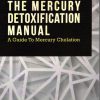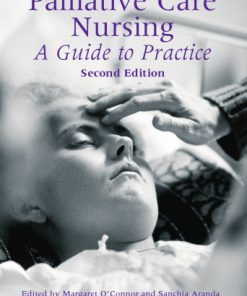Emergency and Trauma Care 3rd edition by Kate Curtis,Clair Ramsden,Ramon Shaban,Margaret Fry,Julie Considine 9780729542982 072954298X
$50.00 Original price was: $50.00.$25.00Current price is: $25.00.
Emergency and Trauma Care 3rd edition by Kate Curtis,Clair Ramsden,Ramon Shaban,Margaret Fry,Julie Considine – Ebook PDF Instant Download/Delivery:9780729542982, 072954298X
Full download Emergency and Trauma Care 3rd edition after payment

Product details:
ISBN 10:072954298X
ISBN 13:9780729542982
Author:Kate Curtis,Clair Ramsden,Ramon Shaban,Margaret Fry,Julie Considine
Endorsed by the College of Emergency Nursing Australasia. CENA is the peak professional association representing emergency nurses and has endorsed this text in recognition of the relevance it has to emergency nursing across Australasia.Led by an expanded editorial team of internationally recognised clinicians, researchers and leaders in emergency care, the 3rd edition of Emergency and Trauma Care for Nurses and Paramedics continues to be the foremost resource for students preparing to enter the emergency environment and for clinicians seeking a greater understanding of multidisciplinary emergency care.
Emergency and Trauma Care 3rd Table of contents:
Section 1 Foundations of Emergency Care
Introduction
Chapter 1 Emergency nursing in Australia and New Zealand
Emergency nursing
Emergency departments
Emergency service (re-)design of models of care
Australasian nurse competency standards
Development of emergency nursing professional bodies
Emergency nurse specialisation
Clinical roles
Leadership and management
Professional development
Summary
Useful websites
References
Chapter 2 Paramedicine in Australia and New Zealand
Historical overview of paramedicine by jurisdiction
Evolutions in pre-hospital care
Air ambulance services
Role of volunteers in pre-hospital care
Current status of paramedicine
Regulation of paramedicine
The future of paramedicine
Summary
Useful websites
References
Chapter 3 Clinical ethics for emergency healthcare
Ethics: an ancient and evolving field
The ethical framework of emergency healthcare: our moral commitments and obligations
Ethical decision-making
Sequelae—Another key value: taking care of yourself
Summary
References
Chapter 4 Emergency care and the law
What is the law?
Different types of laws
Professional competency and patient safety
The Coroner’s Court
Investigations and court
Child Protection Act and mandatory reporting
Documentation
Confidentiality
Privacy
Assault and consent
Who may give consent when the patient can not
Advance care directive
Palliative care
Medicines
Mental health and involuntary detention
Restraint
Negligence
Nurse practitioner responsibilities
Summary
References
Chapter 5 Cultural considerations in emergency care
Culture and what it means for healthcare workers
What does the word ‘culture’ describe?
Understanding the health–illness experience from the patient’s perspective
Matters specific to Australia
Matters specific to New Zealand–Aotearoa
Summary
Useful websites
References
Chapter 6 Patient safety and quality in emergency care
Safety and quality frameworks
Outcomes
Structure of the ED
Emergency care processes
Summary
Useful websites
References
Chapter 7 Research for emergency care
Evidence-based practice
Research and the process
Method
Data analysis
Ethical considerations in research
Results, conclusions and recommendations
Dissemination and translation of research findings
Research priorities for emergency care
Summary
References
Chapter 8 Patient and carer engagement and communication
Health literacy
Effective patient communication
Targeting patient education about medication adherence
Health promotion activities and disease prevention strategies
Verbal patient education and communication
Written patient information
Developing written patient information
Summary
Useful websites
References
Section 2 Clinical Concepts and Systems
Introduction
Chapter 9 Scene assessment, management and rescue
Safety first—keeping you and the patient safe
Scene management priorities—why an organised scene is priceless
Scene assessment
Scene access
Patient extrication
Scene egress
Management of specific hazards
Summary
Useful websites
References
Chapter 10 Physiology and pathophysiology for emergency care
Homeostasis
Oxygen transport
Carbon dioxide transport
Oxygen therapy
Homeostatic temperature control
Fluid and electrolyte balance in homeostasis
Nervous system functions—Fright, fight and flight, or Rest and digest
Capillaries and nutritive blood flow
Cellular metabolism
Cell protection: the blood–brain barrier
Shock
Unique population groups
Summary
References
Chapter 11 Clinical reasoning, problem-solving and triage
Clinical reasoning for quality emergency care
Theoretical considerations
Triage
Triage decision-making tools
Triage nurse decision-making
Triage nurse education
Triage documentation and legal aspects
Paramedic applications: patterns and protocols and triage for problem-solving
Special conditions
Communicating for patient safety
Summary
Useful websites
References
Chapter 12 Major incident preparedness and management
What is a mass-casualty incident?
Government planning for mass-casualty incidents
The challenge for paramedics and other healthcare providers
Risk analysis in planning by hospitals
The pre-hospital phase
Hospital phase
Debriefing
Chemical–biological–radiological MCIs
Likelihood of a CBR attack
CBR agents and their effects
Pre-hospital management of a CBR MCI
Personal protective equipment
Bioethical implications in triage
Awareness training and education
Summary
Useful websites
References
Chapter 13 Patient assessment and essentials of care
The assessment process
The primary survey
Assessment (clinical examination)
Head-to-toe assessment
Special considerations
Communication
Essentials of care
Caring
Personal hygiene and preventing complications
Prevention of deconditioning
Nutrition
Elimination
Summary
Useful websites
References
Chapter 14 Resuscitation
Identification of and response to the deteriorating patient
Basic life support
Advanced life support
Care of families and family presence during resuscitation
Summary
Useful websites
References
Chapter 15 Stabilisation and transfer
Intra- and inter-facility patient transport
Types of transport
Clinical coordination and communication
Team preparation
Principles of transport
Monitoring and equipment
Stressors of transport
Debrief and post-mission review
Psychological considerations
Summary
Useful websites
References
Chapter 16 Clinical skills
Airway management
Capnography/end-tidal carbon dioxide monitoring
Cervical spine immobilisation
Suctioning techniques
Arterial blood gases
Blood glucose level sampling
Underwater-seal drains
Respiratory function testing
Cardiac monitoring
Temporary cardiac pacing
Vascular access
Haemodynamic monitoring
Central venous catheters
Soft tissue injuries
Casts
Splinting
Crutches and walking sticks
Regional anaesthesia and nerve blocks
Removal of objects
Wound closure
Eye emergencies
Summary
Acknowledgement
Useful websites
References
Chapter 17 Minor injury and management
Pre-hospital care
Initial assessment
Practical care
Hospital/health facility care
A systematic approach to injury assessment
Injuries around the shoulder
Injuries to the elbow, forearm and wrist
Injuries of the hand and digits
Injuries around the knee
The lower leg, ankle and foot
Injuries of the skin: wounds
Summary
References
Chapter 18 Pain management
Definition of pain
Anatomy and physiology of pain
Pathophysiology
Patient assessment
Management
Anaesthesia
Summary
Useful websites
References
Chapter 19 Organ and tissue donation
Donation and transplantation in Australia and New Zealand
Pathways of donation
The procurement process
Donor family care
Summary
Useful websites
References
Chapter 20 End of life
Cultural considerations
Palliative care
Advance care planning
Sudden and unexpected death
Sudden death of a child
Family presence during resuscitation
Care of a deceased patient
Post-mortem examination
Mass casualty incidents
Staff support
Summary
Useful websites
References
Section 3 Emergencies
Introduction
Chapter 21 Respiratory emergencies
Respiratory failure
Respiratory assessment
Emergency care considerations for respiratory issues
Support of respiratory function
Non-invasive ventilation
Invasive mechanical ventilation
Acute pulmonary oedema
Asthma
Chronic obstructive pulmonary disease
Pneumonia
Pulmonary emboli
Respiratory outpatient care programs
Inhalation injuries
Summary
Acknowledgement
Useful websites
References
Chapter 22 Cardiovascular emergencies
Anatomy and physiology
Electrocardiogram interpretation
Cardiac assessment
Acute chest pain
Acute coronary syndromes
Cardiogenic shock
Percutaneous coronary intervention
Pharmacological management
Cardiac dysrhythmias
Cardiac pacing
Chronic heart failure
Acute pericarditis
Aortic aneurysm
Aortic dissection
Hypertensive emergencies
Summary
Useful websites
References
Chapter 23 Neurological emergencies
Anatomy and physiology of the nervous system
Divisions of the nervous system
Assessment of the patient with altered consciousness
Investigations
Delirium
Transient ischaemic attacks
Vertebrobasilar attacks
Stroke
Seizures
Headache
Inflammatory brain conditions
Summary
Useful websites
References
Chapter 24 Gastrointestinal emergencies
Anatomy and physiology
General assessment
Upper gastrointestinal emergencies
Lower gastrointestinal emergencies
Summary
Websites
References
Chapter 25 Renal and genitourinary emergencies
Anatomy and physiology
Patient assessment
Physical assessment
Specific conditions
Summary
Useful websites
References
Chapter 26 Endocrine emergencies
Anatomy and physiology
Diabetes
Hyperglycaemic, hyperosmolar syndrome
Adrenal insufficiency
Acute pituitary apoplexy
Thyroid storm
Myxoedema coma
Cushing’s syndrome
Summary
Useful websites
References
Chapter 27 Healthcare-associated infections and infectious diseases
Healthcare-associated infection and infectious disease in emergency care
Overview of infection and infectious disease
Breaking the chain—preventing infection
Specific challenges for infection prevention in emergency care
Summary
References
Chapter 28 Environmental emergencies
Temperature-related emergencies
Heat-related emergencies
Cold-related emergencies
Drowning
Atmospheric-pressure-related emergencies
Diving emergencies
Envenomations
Antivenom
Snakebite
Snakes
Spiders
Other terrestrial envenomations
Marine envenomations
Summary
Useful websites
References
Chapter 29 Oncological and haematological emergencies
Cancer incidence in Australia and New Zealand
Cancer pathophysiology
Cancer and the immune system
Cancer diagnosis and treatment
Oncological emergencies
Haematological emergencies
Thrombocytopenia emergencies
The patient who is bleeding
Metabolic emergencies
Non-metabolic oncological emergencies
Venous access
Summary
Useful websites
References
Chapter 30 Toxicological emergencies
Demographics and common presentations
Resuscitation
Risk assessment
Supportive care
Investigations
Gastrointestinal decontamination
Enhanced elimination
Antidotes
Disposition
Commonly ingested agents
Summary
References
Chapter 31 Dental, ear, nose and throat emergencies
Anatomy and physiology
Patient assessment
Dental emergencies
Ear emergencies
Nasal emergencies
Throat emergencies
Facial emergencies
Summary
Useful websites
References
Chapter 32 Ocular emergencies and trauma
Anatomy and physiology
Patient assessment
Ophthalmic examination
Eye emergencies
Trauma
Chemical burns
Glaucoma
Central retinal artery occlusion
Central (branch) retinal vein occlusion
Ocular pharmacology
Summary
References
Chapter 33 Gynaecological emergencies
Anatomy and physiology
Patient assessment
Clinical presentations
Ovarian emergencies
Infections
Sexually transmitted infections
Common types of genital tumour
Endometriosis
Emergency contraception
Summary
Useful websites
References
Chapter 34 Obstetric emergencies
Obstetric emergencies
Anatomy and physiology
Recognition of the sick woman
Maternal collapse
Clinical presentations
Summary
Useful websites
References
Chapter 35 Paediatric emergencies
Approach to paediatrics
Assessment
Triage
Respiratory emergencies
Cardiovascular emergencies
Neurological emergencies
Abdominal emergencies
Rashes and soft-tissue infections
Neonatal presentations
Fever
Trauma
Pain management and procedural sedation
Health promotion
Summary
Useful websites
References
Chapter 36 Mental health emergencies
Background
Prevalence of mental health admissions in EDs
Supporting individuals in the out-of-hospital environment
Pathways to the ED
Out-of-hospital assessment and management
ED triage assessment
After triage
Mental health conditions
Substance misuse and dual diagnosis
Suicide and self-harm
Other considerations when providing emergency mental health care
Early intervention in aggression and mitigation strategies to prevent unnecessary use of restraint and/or restrictive practices
Cultural considerations when providing an emergency mental health response
Collaboration and teamwork between mental health professionals
Summary
Useful websites
References
Chapter 37 People with disabilities
Historical context
Nature of problem in emergency care
National Disability Insurance Scheme and New Zealand Disability Strategy
Broader implications
Aetiology and epidemiology of intellectual disability
Intellectual disability morbidity
Diagnostic overshadowing
Major emergency care issues for people with an ID
Assessment of the person with an ID
Particular clinical presentations
Communication with the person with an ID
Summary
Useful websites
References
Chapter 38 The older person
Assessment of normal ageing
Conditions often seen in older people
Tips and tools: the geriatric assessment in the emergency health setting
Discharge risk assessment
Futility criteria
Geriatric emergencies
The dying patient
Conclusion
Useful websites
References
Chapter 39 Violence, abuse and assault
The child at risk
Intimate partner violence
Sexual assault
Elder abuse and neglect
Summary
Useful websites
References
Chapter 40 Alcohol, tobacco and other drug use
Overview and background
Understanding ATOD problems
ATOD emergency assessment and screening
Engaging with the patient with an ATOD dependence
Major ATOD groups
Cannabis
Psychostimulants
Common psychostimulants
Some other drugs
Summary
Useful websites
References
Section 4 Major Trauma
Introduction
Chapter 41 Epidemiology of injury
The burden of injury
History
Epidemiology of trauma in Australia and New Zealand
Trauma morbidity
Trauma determinants
Mechanisms of injury
Effects of injury on society
Injury prevention
Tracking injury in Australia and New Zealand
Standardised clinical trauma management
Trauma specialist roles
Summary
Useful websites
References
Chapter 42 Major trauma initial assessment and management
Preparation
The trauma team
Initial resuscitation
Primary survey
Secondary survey
Tertiary survey
Ongoing nursing care in the ED
Criteria for early transfer
Family presence
Post-traumatic stress
Summary
Useful websites
References
Chapter 43 Traumatic brain injury
Epidemiology
Injury mechanism
Anatomy
Physiology
TBI classifications
Patient assessment and management
Mild traumatic brain injury
Summary
Useful websites
References
Chapter 44 Maxillofacial trauma
Anatomy and physiology
Injury mechanism
Patient assessment
Specific fracture management
Summary
Useful websites
References
Chapter 45 Thoracic and neck trauma
Anatomy and physiology
Patient assessment
Clinical interventions
Radiology
Fractures of the bony thorax
Pneumothoraces
Other thoracic injuries
Neck injuries
Summary
Useful websites
References
Chapter 46 Abdominal and genitourinary trauma
Epidemiology
Anatomy
Mechanism of injury
Initial assessment and management
Investigations
Ongoing management
Management techniques
Specific organ injury
Genitourinary trauma
Genital injuries
Postoperative management
Summary
Useful websites
References
Chapter 47 Spinal trauma
Epidemiology
Anatomy and physiology
Mechanisms and associated injuries
Pre-hospital assessment and initial management
Spinal stabilisation
Ongoing patient assessment
Pharmacological management
Definitive care
Primary and secondary damage
Classification of spinal cord injuries
Autonomic dysreflexia/hyperreflexia
The future
Summary
Useful websites
References
Chapter 48 Major orthopaedic and neurovascular trauma
Anatomy and physiology
Patient assessment
Clinical interventions
Radiology
Pain management
Dislocations and subluxations
Traumatic amputations
Fractures
Mangled limbs
Pelvic fractures
Proximal femur and femoral neck fractures
Crush injury
Compartment syndrome
Fat embolism syndrome
Delayed complications
Infection prevention
Traction
Splints
Psychosocial aspects
Summary
Useful websites
References
Chapter 49 Burns trauma
Epidemiology and aetiology of burns
Pathophysiology
Paramedic emergency and first aid treatment
Burns shock and fluid resuscitation
Inhalational injury
Burn wound assessment and management
Specific burn management
Burns in children
People also search for Emergency and Trauma Care 3rd :
what is trauma and emergency nursing
emergency and trauma care for nurses and paramedics 3rd edition
what is emergency and trauma care
emergency medicine and trauma services policy
types of emergency trauma
Tags:
Kate Curtis,Clair Ramsden,Ramon Shaban,Margaret Fry,Julie Considine,Care,Trauma
You may also like…
Education Studies & Teaching - Studying & Test Preparation
Politics & Philosophy - Social Sciences
Politics & Philosophy - Anthropology
Education Studies & Teaching - Special Education
Successful Educational Actions for Inclusion and Social Cohesion in Europe 1st Edition Ramon Flecha
Business & Economics
Bookkeeping for Dummies 3rd Edition by Veechi Curtis 0730384799 9780730384793
Politics & Philosophy - Anthropology
History - World History
Discerning the good in the letters and sermons of Augustine 1st Edition Clair












